Updates on your cosmos and world
Sun activity: CME strikes Earth as more leave the sun
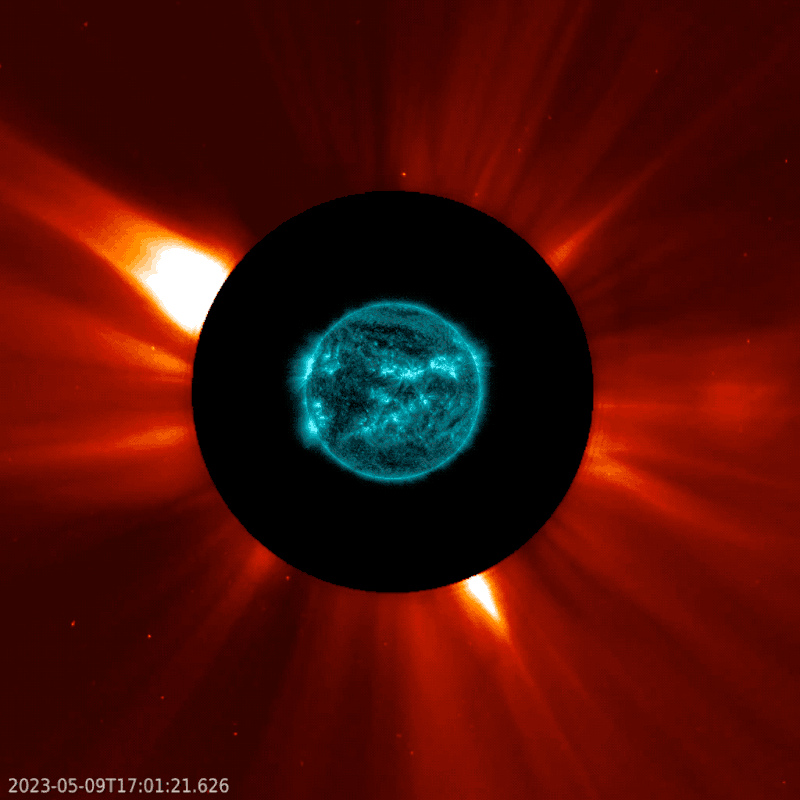
Sun activity for May 10, 2023: CME strikes Earth as more leave the sun
Today’s top news: The awaited coronal mass ejection (CME) from May 7, struck Earth at 23:59 UTC on May 9, 2023. A G1 (minor) geomagnetic storm followed. NOAA forecasters expect conditions for up to a G2 (moderate) geomagnetic activity today into the early hours of May 11. This may bring auroral displays to the northern US. Good luck aurora chasers. Meanwhile, sun activity remains high with an M4.2 flare followed by an M5 from AR3296 at the end of May 9. A full hallo” rel=”noopener” target=”_blank”>full halo CME was associated with the M4.2. This event produced a solar particle burst accelerated by its shock wave. AR3296 developed a delta region. This combined with its anti-Hale nature gives a strong indication for more activity including a possible X flare. Stay tuned to see if AR3296 lives up to its full potential.
Last 24 hours: Sun activity is high with an M4.2 and an M5 flare. AR3296 was the main flare producer with the two M flares and 9 of the 10 C flares. The largest event, an M5 at 20:52 UTC on May 9 followed an M4.2 flare at 18:20 UTC. The M4.2 was the more notable event because it also brought a full halo CME and a particle event accelerated by the CME shock wave. The sun has nine labeled active regions including the addition of four newcomers now labeled AR3300, AR3301, AR3302, and AR3203.
Next 24 hours: The forecast is a 99% chance for C flares, a 65% chance for M flares, and a 20% chance for X flares.
Next expected CME: As mentioned above, the M4.2 flare exploded by AR3296 which presented a full hallo event is under detailed modeling and analysis to determine any component coming our way. Enlil model suggest arrival by May 11-12 but we need to wait for confirmation. Besides this, no other coronal mass ejection (CME) Earth-oriented was observed on available imagery.
Current geomagnetic activity: Quiet at the time of this writing (11 UTC May 9) but an active level was observed late yesterday May 9 and early today May 10 with a G1 (minor) geomagnetic storm level. Threshold reached at 12:59 UTC on May 9 and 03:17 UTC on May 10. A G2 (moderate) geomagnetic storm level is anticipated later on today. The present conditions are due to a coronal mass ejection (CME) that left the sun on May 7. These conditions may be extended into May 11 going up to a G3 (strong) geomagnetic storm, should the CME produced by the M4.2 on May 9 is confirmed. Alert for aurora watchers.
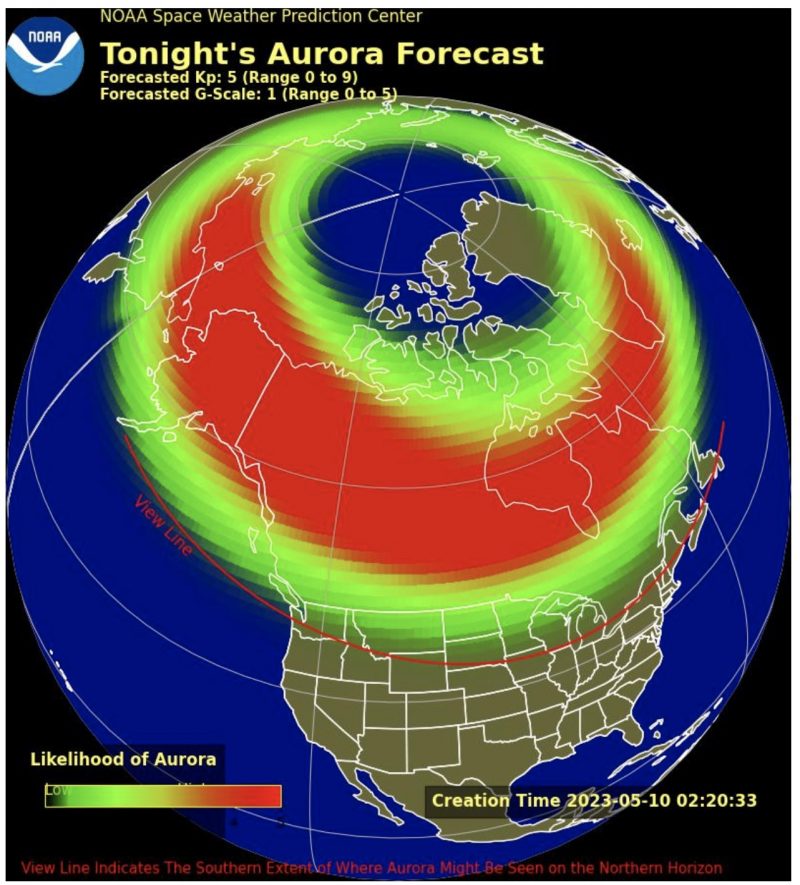

Sun activity for May 9, 2023: All eyes are on sunspot AR3296
Today’s top news: Sunspot AR3296 has single-handedly brought sun activity to a high level, with M6.5, M2.3, M1.4 and M1.2 flares in the past day. The region does not currently have a delta region, that is, a region indicating a likelihood for M or X flares. But it still carries its anti-Hale feature, a reversed magnetic polarity (read about Hale’s Law here). And it has some magnetic complexity overall. Plus, it has increased in activity over the past 24 hours! It produced the four M flares, plus 16 of a total of 19 C flares observed over the past day. All of this gives us a force to reckon with.
Last 24 hours: Sun activity is high due to four M flares, including one flare stronger than M5. This largest event was an M6.5 from AR3296 at 3:54 UTC on May 9, 2023. The other M flares were, an M2.3 at 20:25 UTC on May 8, an M1.2 at 6:13 UTC on May 9, and an M1.4 at 10:20 UTC on May 9. All four M flares came from sunspot region AR3296. Each M flare produced its correspondent radio blackout and the largest flare produced an R2 (moderate) radio blackout affecting an area over Taiwan and the Philippine Sea. AR3296 produced 20 of the 23 flares observed in the past day (19 C flares and 4 M flares). The sun has five Earth-facing sunspot regions today.
Next 24 hours: The forecast is a 99% chance for C flares, a 55% chance for M flares, and a 20% chance for X flares.
Next expected CME: The partial halo coronal mass ejection (CME) we discussed yesterday, caused by an M1 flare occurring late on May 7 (produced by AR3296) is coming our way. It should arrive at Earth late on May 10. AR3296 has also spewed out several other CMEs, and we await modeling and analysis to determine any Earth-directed components.
Current geomagnetic activity: Quiet at the time of this writing (11 UTC May 9). Quiet to unsettled activity is expected during the rest of the day with chances for an isolated active level. A G1 (minor) geomagnetic storm is still possible due to fast solar wind. Conditions for a G1 (minor) are possible late tomorrow with the arrival of a CME that left the sun on May 7 combined with the influence of fast solar wind from a coronal hole.


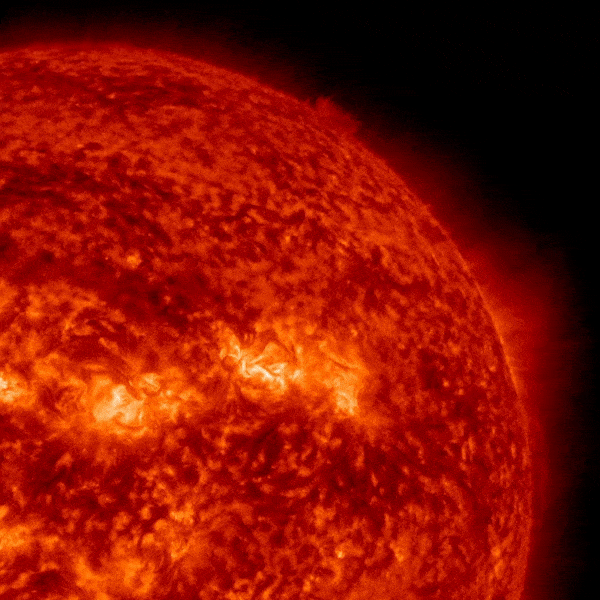
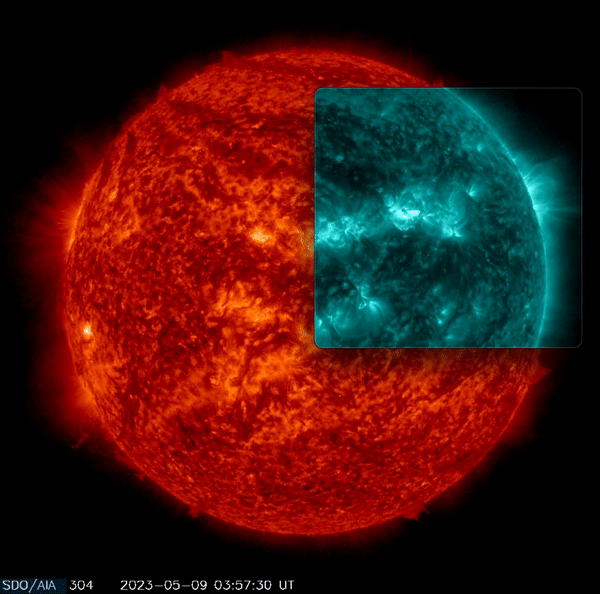
Sun activity for May 8, 2023: Storming has started. More CMEs on the way
Today’s top news: Sun activity is moderate, and there’s been activity both on the sun and at Earth. A coronal mass ejection (CME) struck Earth yesterday, causing geomagnetic storming. It struck at around 15:50 UTC on May 7 and caused a minor (G1) storm as May 8 began. It wasn’t the expected G2 storm. But it’s not over yet! We’re currently awaiting more CMEs at Earth and more geomagnetic activity over the next two to three days. And – as Earth was being buffeted late yesterday and early today by the CME (which is a large expulsions of solar plasma and magnetic fields from the sun) – the sun itself was getting busy with a long-duration M1.6 flare from AR3296 … and another CME directed our way. We await further analysis of the event. But all signs point to the possibility that the next few days will be exciting for aurora-watchers, here on Earth. Plus! The excitement on the sun might not be over. Both AR3296 and AR3297 have developed delta regions – a sign of more activity to come. Clear skies to all the aurora-watchers. Visit this post again tomorrow, for more fun sun news!
Last 24 hours: Sun activity is moderate due to two M flares and 10 C flares. The largest event was an M1.6/ M1.5 flare from AR3296 at 22:53 UTC on May 7, 2023. The other M flare, an M1.5 – and eight of the C flares – were from AR3296. The M flares registered as two events, but they were part of a single long-duration event. Long-duration events are typically associated with coronal mass ejections (CMEs). This long-duration event has an associated halo-CME, meaning that it appears to be heading directly for Earth. The sun has five Earth-facing sunspot regions.
Next 24 hours: The forecast is a 99% chance for C flares, a 55% chance for M flares, and a 15% chance for X flares.
Next expected CME: The long-duration M1.6 flare from AR3296 appears to have an associated halo-CME headed directly at Earth. We await further analysis from space weather experts for additional details. No other Earth-directed CMEs were observed in available imagery during the last day.
Current geomagnetic activity: Earth’s magnetic field is quiet at this writing (11 UTC, May 8). It is anticipated to reach strong (G3) geomagnetic storm levels on May 8, minor (G1) geomagnetic storm levels on May 9, and active levels on May 10, 2023. This expected activity is due to the influence of fast solar wind from two coronal holes combined with Earth-directed CME activity observed between May 4 through May 5, 2023.

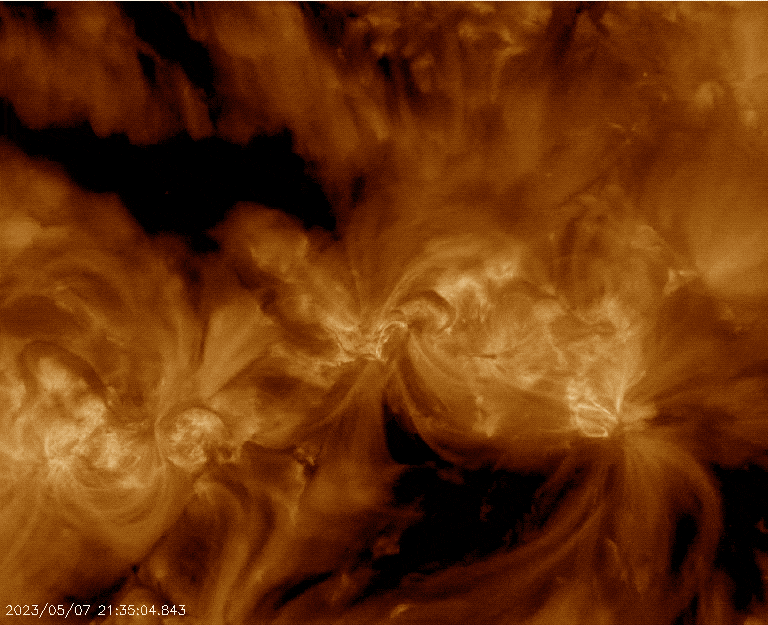
The sun in recent days


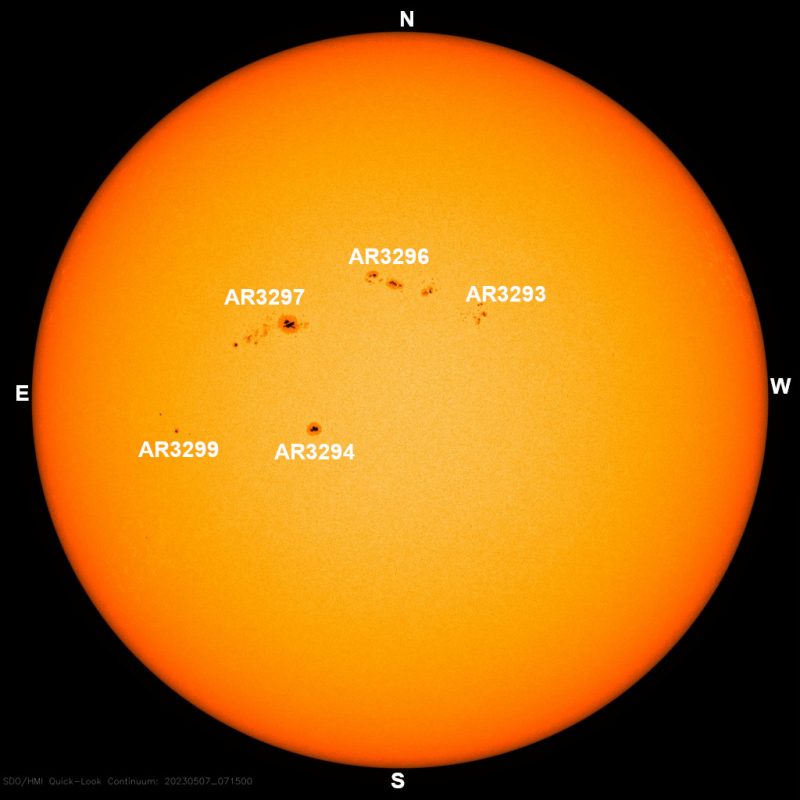




More sun images from our community
We invite you all to send us your beautiful recent photos of sunspots and auroras. Naturally, we love receiving your photos! And to those of you who’ve already posted a photo to our community page, thank you.



Bottom line: Sun activity for May 9, 2023, is high thanks to continued eruptive flaring from AR3296. This includes a CME heading our way and an M6.5 solar flare.

No comments:
Post a Comment